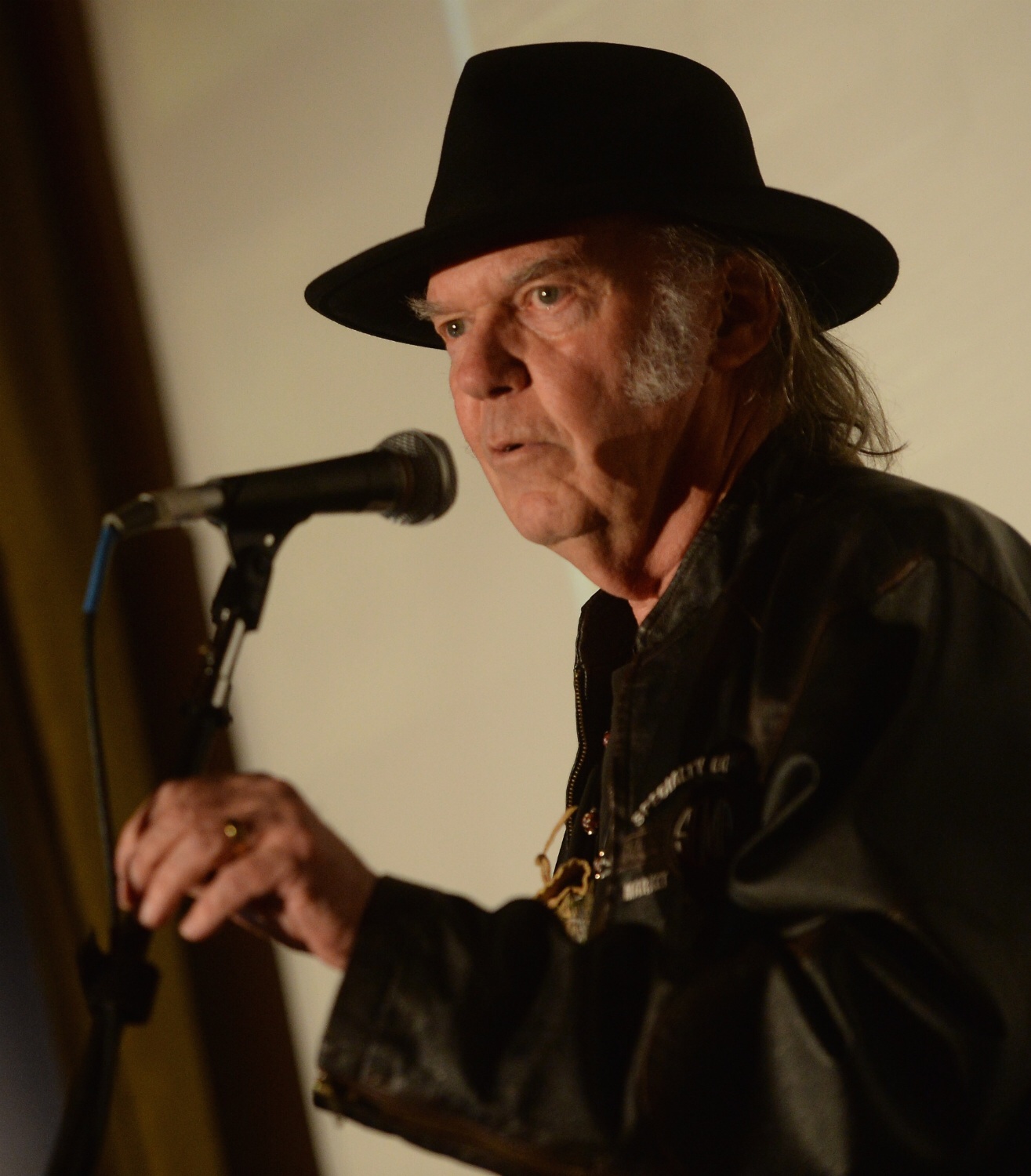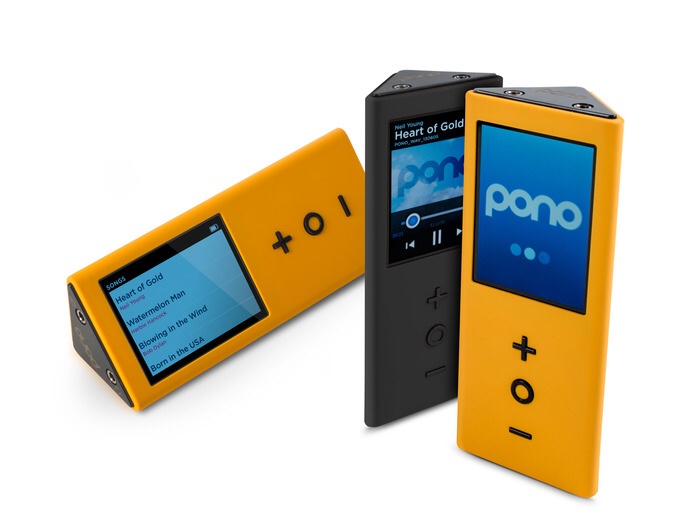
Back in 2012, when legendary musician Neil Young started talking about Pono–his effort to build a portable player with an emphasis on audio quality above all else–it wasn’t particularly obvious that the idea had legs in the 21st century.
For a lot of us, after all, music has become something we listen to on our smartphones, streamed from a service such as Pandora, Spotify or Rdio at whatever quality the service in question chooses to give us. To riff on William F. Buckley’s memorable description of the conservative movement, Young seemed to be standing athwart tech history, yelling “stop!”

Pono still hasn’t hit the market. The wedge-shaped touchscreen gadget–bigger than an iPod, but smaller than a Bluetooth speaker such as the Jambox–will sell for $399 when it shows up. (Once expected to ship last year, it’s now due this fall.) But enough people are excited about the concept to have made PonoMusic the third biggest Kickstarter project of all time. The campaign hit its goal of $800,000 in 10 hours, then went on to raise a total of $6,225,354 from 18,220 backers, who pledged anywhere from $5 (for a thank-you) to $5000 (for an invitation to a VIP dinner and listening party, plus a Pono).
I chatted with Young as the campaign was rocketing past its original target. He told me the idea that became Pono has been kicking around inside his head for years, and didn’t always involve a new portable player.
“First of all, I thought this would be an Internet thing, then I realized that’s not going to happen,” he explains. “The bandwidth isn’t there. We’d have to go back to the original model of the iPod, but with really, really top quality.”
With typical services, he says, “music has been downgraded to ‘content,’ It’s a Xerox of itself. When you see the original art compared to the Xerox, the difference is startling. Whatever the artist creates is what you hear when you hear Pono.”
Although Young talks about Pono as a movement as much as a business enterprise, and sought grassroots funding through Kickstarter, it is in fact a company, with veteran executives and technologists on board. “I’m pretty much the vision of it,” Young says. “I drive the purity and the quality and the transparency of the original artists’ intent.”
Part of Pono’s Kickstarter success was due to its artfully managed campaign, which involved the ability for backers to reserve limited-edition PonoPlayers with the engraved signatures of musicians who back the concept: Everyone from Elton John to EmmyLou Harris to Foo Fighters to Herbie Hancock to Pearl to Willie Nelson to Young’s own groups Buffalo Springfield and Crosby Stills Nash & Young.
“They get it immediately,” says Young of the response to Pono by other musicians. “There’s no learning curve. They’ve been waiting for something like this for a long, long time.”
But he says he’s aiming for mass-market success: “Anyone who thinks this is only for nerds and audiophiles is in for a surprise. Anyone can hear the difference. That’s why we’ve priced it low.”
The era of purely digital music got underway in the late 1990s with the arrival of apps such as Winamp and gadgets like the Diamond Rio, the first successful MP3 player. (I still have audio files I ripped from CD back then, opting for absurdly aggressive compression to conserve precious storage space on my 32MB Rio.) Today, some level of compression–the rate varies widely–is still standard practice for digital music. Which means that there are adults who may be largely ignorant of music in its pre-MP3 form.
Will those folks care about Pono? “The MP3 era is in for a shock,” Young says. “They’re going to realize what they’re missing when they hear this. One hundred percent of the time it happens. They hear it and can’t believe it: ‘I’m hearing things I’ve never heard in songs I’ve heard many times before. How can it be?'”
Pono is not without its critics and skeptics. They argue that the platform’s use of super-high-resolution data–it uses lossless files in the FLAC format, at up to 192 kHz and 24 bit sampling–is a pointless exercise in specsmanship, because going beyond CD quality doesn’t result in a difference human beings can actually hear. Even if that’s true, it doesn’t seem to me that it’s the last word on Pono, since focusing on audio quality might allow a company such as this to design hardware that’s capable of better audio reproduction than your average phone. And PonoPlayer will be able to work with CD-quality files as well as higher-resolution ones.
It’s no shocker that Young is dismissive of the Pono opponents, pointing out that they’ve reached their conclusions without having listed to the still-unreleased player. “They don’t have to waste their time. They can get another MP3 and keep on rocking.”
If Pono is erring on the side of lavishing music with more tender loving care than it may really need, that seems to me to be more admirable than giving it short shrift, as has often happened so far in this century. Other companies have tried to build a business on super-high-quality music and failed, such as MusicGiants; if nothing else, Young’s ambitious, high-profile effort should be the definitive test of whether there’s a market for this.
And it’s not just about the player and whatever music will be available at launch. He talks about, well, just about every song eventually being available for Pono: “The goal is to keep doing it until we’ve got it all—get the new stuff out there and the older stuff that’s still available to get.”
Young calls music “a window to the soul” and “a reflection of civilization.” Sounding like an archivist as much as a purveyor of hardware and software, he says that Pono’s mission “is to create an ecosystem that preserves the history of music for the world in its highest possible form. It’s something that the technological era we live in, the 21st century tech, is capable of delivering.”
“We wouldn’t have a museum where people listened to Frank Sinatra on MP3. It’s the 21st century’s most obvious idea.”
More Must-Reads from TIME
- Donald Trump Is TIME's 2024 Person of the Year
- TIME’s Top 10 Photos of 2024
- Why Gen Z Is Drinking Less
- The Best Movies About Cooking
- Why Is Anxiety Worse at Night?
- A Head-to-Toe Guide to Treating Dry Skin
- Why Street Cats Are Taking Over Urban Neighborhoods
- Column: Jimmy Carter’s Global Legacy Was Moral Clarity
Contact us at letters@time.com